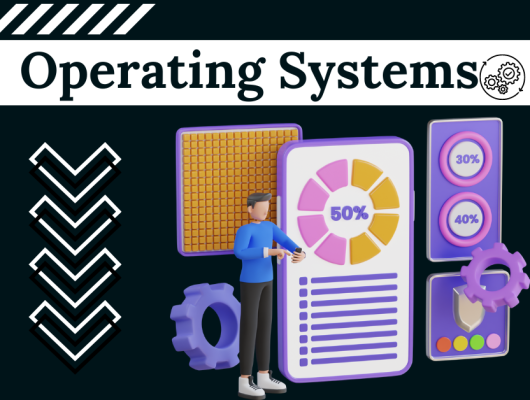In 2024, SEO continues to play a pivotal role in online visibility, with Google’s algorithmic updates driving the need for a strategic SEO(Search Engine Optimization) plan. Leveraging the power of artificial intelligence (AI) and machine learning, businesses are automating tasks and enhancing decision-making. To foster authentic connections with the target audience, understanding online behavior is key. Crafting a comprehensive guide and implementing an emerging trends checklist ensures all criteria are met for effective search engine optimization, facilitating the building of lasting relationships in the digital landscape.
SEO Trends to Expect in 2024
In 2023, the future of online search is shaped by AI-Powered Search. With Bing Chat and Google’s Search Generative Experience (SGE) leading the charge, tech giants like Microsoft and Google are actively refining features to enhance user experiences. According to Statista, 49% of U.S. adults are interested in AI-powered online search, propelling a $100 billion industry. However, as Google continues to innovate, it’s crucial not to lose momentum in the rapidly evolving landscape of SEO trends.
To stand out in this future landscape, understanding and implementing E-E-A-T Content is crucial. AI content is becoming tougher, and adhering to Google’s E-E-A-T guidelines is essential. The guidelines emphasize the importance of Expertise, Authoritativeness, Trustworthiness (E-A-T). High E-E-A-T not only builds user trust but also boosts search engine rewards and leads to more conversions. While AI content can replace human-created content, it’s crucial to double-check E-A-T SEO compliance to maintain accuracy and user trust.
Despite the rapid evolution of search technology, Voice Search continues to hold its ground. UpCity reports that a massive chunk of the U.S. population, around 33.2 million consumers, engages with voice search features daily. Ignoring this substantial potential audience means turning back on an opportunity for increased discoverability. Whether through smart speakers like those operating on Amazon or similar platforms, voice search optimization remains a valuable strategy to boost industry discoverability and engage with a growing market.
Sorting Out Your 2024 SEO Checklist
To optimize your online presence in 2024, it’s crucial to employ an effective SEO checklist. Break down tasks, organize them into categories, and focus on integrating a Frequency-Based approach into your workflow. Rather than feeling overwhelmed, start by combing through the checklist, allowing for a streamlined and organized SEO process.
SEO Component Checklists
SEO Basics
To succeed in the competitive online landscape, businesses must prioritize SEO. Utilize tools like Google Search Console and Analytics to monitor and analyze valuable data. These insights empower informed decisions, allowing you to continuously adjust your strategy for optimal performance. The free services provided by Google Search Console offer a wealth of reports, aiding in the process of optimizing websites for better visibility on Google.
Efficiently measure your SEO efforts by employing Google Analytics. After a simple setup, use the platform to monitor the performance of your website and gain valuable insights from its reporting tools. The Google Analytics Retention Report is a critical tool for understanding user behavior, helping you learn where users find your website and how they navigate its content.
Additionally, be proactive by checking for Google Penalties through basic SEO checks at the beginning of your website journey to avoid any manual or algorithmic punishment, aligning with Guidelines. Don’t forget to register with Bing Webmaster Tools to optimize your website’s appearance and functionality on Bing Search, another vital search engine.
Content Checklist
In the modern-day landscape of SEO, Google ranks websites based on their ability to publish great content. To stay ahead in 2023 and beyond, mastering the Skyscraper Technique is a BIG part of any effective SEO strategy. This 3-step process, popularized by Backlinko, involves identifying popular content in your industry, creating something better, and strategically promoting your content.
When creating content, it’s crucial to break down giant walls of text to keep the bounce rate low, a key Google ranking factor. The Wall of text approach is outdated. Instead, present your content in easy-to-read chunks. Learn the exact steps of the Skyscraper Technique to double your search engine traffic, as demonstrated in the Early traffic increase of 110% in 14 days showcased by Backlinko’s All-Time Favorite White Hat SEO Technique.
To rank best on Google in 2023, focus on providing in-depth coverage of a topic. Clearscope content grades show that Content covering the entire topic tends to correlate with higher Google rankings. For instance, creating a comprehensive guide like the Video SEO guide published by Backlinko could propel your content to the top 3 on the Google SERP for your primary keyword.
Use Schema markup to make your content more understandable to search engines, and consider incorporating various multimedia elements, such as images, charts, infographics, and videos, to make your content more engaging and better for SEO.
Link Building Checklist
1. Link Building Strategies for SEO:
Building powerful backlinks is a super effective SEO link building strategy. One right way is through guest posting on respected sites in your industry. Don’t go the wrong way by publishing on any website. For example, Buffer’s blog has a “Write for Us” page where you can build backlinks the right way. Brian’s post on Buffer’s blog is an excellent example of an effective link-building strategy that drives traffic.
2. Reverse Engineering Competitor’s Backlinks:
Instead of trying to reinvent the wheel, copy your competitor’s link sources. Use a link analysis tool like Semrush or Moz, even if you’re on a budget. With a freemium tool like Link Explorer from Moz, you can grab your competitor’s URLs and, through a reverse engineering process, identify many links. For example, a link report from Semrush can make replicating your competitor’s links nearly impossible, but understanding the relationships is easy to copy.
3. Building Contextual Backlinks with Link Roundups:
A strategy that works great for building contextual backlinks is participating in link roundups. Catch the attention of roundup creators and reveal a technique that works. This strategy can be as simple as contributing to a roundup in your niche, showcasing your expertise, and reaping the benefits of building relevant and contextual backlinks.
4. Becoming a Podcast Guest:
Similar to guest posting, being a podcast guest is an effective way to build backlinks. A few years ago, Brian Dean changed the SEO game by becoming a podcast guest on various shows. This sweet backlink strategy not only puts you in front of a targeted audience but also generates valuable traffic. Agents of Change podcast, for example, can be a great platform for gaining a podcast backlink.
5. Mentioning Influencers in Your Blog Posts:
A simple process to mention influential bloggers in your content can go a long way. Let them know you’ve mentioned them, and, seriously, they might share your content. For example, if you publish a list of SEO tools and mention the founder of a tool like Brian in your blog post, a quick email outreach can lead to them happily sharing your content on social media.
Keyword Research
Ronnel Viloria, Thrive’s Lead SEO Strategist, emphasizes the importance of comprehensive Keyword Research for a successful digital strategy. Leveraging tools like Ahrefs and Semrush allows analysis of various factors such as Search Volume, Competition, and Keyword Difficulty.
By understanding Search Intent and exploring Related Keywords, one can uncover opportunities and refine content for a target Audience. Automated Audit Reports and Competitive Analysis features in these tools aid in revealing competitors’ keyword strategies, helping to identify ranking Gaps and formulate a strategic approach to both short-tail and long-tail keywords.
Effective Competitor Analysis involves utilizing tools like SpyFu and Semrush. Examining Competitors’ Keyword Strategies provides insights into the crowded landscape. Backlinko recommends exploring searches on platforms like AnswerThePublic to discover questions and niches.
Organizing content through Keyword Clustering in a hierarchical manner caters to Google Bots and Users alike. This strategic approach to content creation aligns with the central topic, optimizing for the interests, behavior, and demographics of the target audience. In the ever-evolving landscape of Search Engines, staying ahead involves a dynamic strategy that addresses both the competitive and user-centric aspects of digital presence.
On-Page SEO
1. Crafting Compelling On-Page Content
In the dynamic field of SEO, the creation of compelling on-page content is paramount. This content serves as a bridge between the algorithms of search engine bots and the discerning eyes of human visitors. To succeed in this, one needs both the artistry of captivating language and the technical know-how of incorporating SEO keywords effectively. This involves fashioning title tags and meta descriptions that emulate the succinct allure of a captivating newspaper headline or a persuasive elevator pitch. The goal is to stand out on the search engine results pages (SERPs) and entice users to click through, emphasizing not only SEO-friendliness but also an emotional impact.
2. Structuring Content with Strategic Headings
Effective use of headings (H1, H2s, and H3s) is pivotal in making your content visually appealing and structurally sound. These headings break up sections, making the content easier to read for both users and search engines. Conducting a thorough audit, utilizing tools like Screaming Frog, ensures that the H1 title encapsulates the target keyword, while subsequent H2 and H3 sections appropriately structure the content. This strategic use of headings aids in optimizing the content for SEO while providing a seamless reading experience.
3. Optimizing URL for SEO Success
The URL of a webpage presents a unique opportunity for SEO enhancement. A clean, concise, and descriptive URL, comprising fewer than 75 characters, can significantly maximize its potential. Including relevant keywords and crafting a URL that succinctly describes the page’s content is vital. This not only makes the URL more search engine-friendly but also contributes to a user-friendly experience. Avoiding unnecessary characters and incorporating hyphens or underscores for spaces aligns with best practices, showcasing the importance of an optimized URL in the SEO landscape.
4. Enhancing SEO with Internal Linking
Internal linking is a powerful strategy that contributes to both user experience and SEO success. By strategically placing links within your content, you can distribute page authority throughout the site, providing readers with easy access to additional, related information. This not only improves the overall structure of the website but also enhances the chances of content ranking higher in search results. Utilizing tools like the Yoast SEO plugin simplifies the internal linking process by providing suggestions and ensuring the use of descriptive anchor text.
5. Navigating External Links for SEO Excellence
When it comes to external links, a cautious approach is necessary. Linking to trustworthy and reputable websites is crucial for maintaining the integrity of your own content. Understanding the significance of domain authority (DA) in assessing a website’s trustworthiness and credibility is paramount. Tools like Moz Link Explorer can assist in gauging a website’s DA, ensuring that external links align with SEO best practices. This not only satisfies the discerning eyes of search engines but also adds value for human readers by directing them to relevant, high-quality external content.
Off-Page SEO
1. Off-Page SEO Strategies:
To optimize your website with effective off-page SEO strategies, elevate its value on the Internet. Engage in community discussions within your industry, and run targeted content campaigns. Building a strong online presence involves optimizing for search engines while actively participating in the community.
2. Tasks for 2024:
In the next year, focus on eight tasks, including building quality backlinks from high-authority sites. Evaluate domain authority and relevance, ensuring link placement aligns with specific pages. Engage in guest blogging, leverage social media for diverse backlink profiles, and participate in community discussions. Quality over quantity is key for a sustainable and effective SEO strategy.
3. Engage in Guest Blogging:
Guest blogging isn’t dead if done right. Pitch killer article ideas to reputable sites in your industry, gaining quality backlinks. Leverage author bios and resource boxes to improve your domain authority and search engine ranking. Engaging with journalists through HARO can also help secure influential backlinks.
4. Leverage Social Media:
Social media directly impacts SEO. Drive traffic, amplify content, and encourage backlinks by sharing relevant updates on social platforms. Use tools like Hootsuite to schedule posts and track engagement. Leveraging social media effectively can significantly enhance your online presence.
5. Participate in Community Discussions:
Engage in community discussions on forums, Reddit threads, and Facebook groups relevant to your target audience. Provide valuable insights, subtly promote your content, and track brand keywords being discussed. Avoid spam and focus on building a genuine presence within the community.
6. Create Shareable Content:
Create shareable content such as infographics, quotes, and how-to videos. Use social sharing plugins and widgets on your website, like ShareThis and AddThis, to encourage users to share content easily on their own feeds and across social media platforms.
7. Optimize Your Google Business Profile:
Your Google Business Profile is the new front door for local businesses. Optimize it by completing all sections, including accurate business information, high-quality images, and engaging posts. Encourage customer reviews, verify your listing, and utilize Google Q&A for better interaction with potential customers.
8. Encourage Customer Reviews and Testimonials:
Customer reviews and testimonials play a huge role in off-page SEO. Encourage users to leave reviews through email campaigns, in-app prompts, and social media requests. Display these reviews on your website, creating a dedicated page with a link to the content.
9. Monitor Your Backlink Profile:
Keep an eye on your backlink profile, noting who’s linking to your site. Remove spammy or low-quality links promptly. Use tools like Google’s Disavow Tool and trusted solutions like Ahrefs and Semrush to check the health of your backlink profile and ensure its credibility.
Technical SEO
1. Speed Matters:
To optimize website speed, avoid slow-loading elements like large files. Use efficient coding practices, browser caching, and content delivery networks (CDNs). Eliminate unnecessary plugins and scripts. Implement compression techniques like GZIP for faster loading times.
2. Mobile-Friendly Design:
In today’s era of increasing mobile web traffic, it’s crucial to ensure mobile responsiveness. Use the Mobile-Friendly Test to see how your site stacks up on mobile devices. Redesign or choose modern CMS platforms like WordPress or Squarespace to effortlessly build mobile-friendly websites.
3. Fix Broken Links:
Identify and fix broken links promptly. Use tools like Screaming Frog or Xenu Link Sleuth to enhance both user experience and search engine crawlers’ perception of your site.
4. XML Sitemap Optimization:
Create an XML sitemap file to help search engines like Google and Bing efficiently crawl your web pages. Structure your content to provide a roadmap for the crawlers to understand the hierarchy and relationships between pages.
5. Robots.txt Configuration:
Optimize your robots.txt file to ensure that it’s configured correctly. Allow search engines to crawl important pages, exclude admin pages, and set crawl delays to prevent overloading. Enclose the XML sitemap configuration to guide search engine crawlers effectively.
6. Canonical Tags for Duplicate Content:
Utilize canonical tags to avoid confusion for search engines when dealing with duplicate content. Be it the built-in options in CMS platforms like WordPress or manual additions in the <head> section, correct syntax is essential for improving site structure.
7. Clean URL Structure and Navigation:
Enhance site structure with a logical hierarchy, clean URL structure, and intuitive navigation. Implement breadcrumb trails, internal links, and a flat architecture to improve crawlability and help search engines understand the relationships between pages.
8. URL Parameters Configuration:
Configure URL parameters efficiently, especially session IDs and tracking codes. Handle them appropriately in Google Search Console to manage crawl budget and avoid duplicate content issues.
9. Structured Data Markup:
Implement structured data markup in your website’s HTML. Use schema markup for various content types such as articles, local businesses, events, products, recipes, videos, logos, and images. Validate the markup with the Rich Results Testing Tool to ensure it is accepted without errors or warnings.
10. Monitor and Fix Site Errors:
Regularly monitor your website for errors using tools like Google Search Console and Ahrefs. Address issues such as 404: Not Found errors, 500: Internal Server Error, redirects, and slow loading times promptly. These common errors not only hurt SEO but also provide a poor user experience.
11. International SEO Strategies:
For websites targeting users in different countries and languages, implement hreflang tags. This ensures that search engines serve the right content to the right audience based on language and location. Multinational companies and franchises can use these tags to display content relevant to the user’s location.
12. Localized Content Strategy:
Engage international markets effectively with a localized content strategy. Conduct thorough keyword research based on the target language, location, culture, and context. This approach aligns your content with the preferences of diverse international audiences, improving engagement and relevance.
Local SEO
1. Claiming and Controlling Your Google Business Profile
Ensuring your local business’s discoverability on Google Search and Maps starts with claiming your Google Business Profile (GBP). An unclaimed GBP may lack accurate information and hamper your online presence. By claiming it, you gain control over crucial details like Business Name, Address, Category, Phone number, Website URL, and more. Engage with customers through photos, videos, and even a virtual tour of your physical business to enhance your reputation.
2. Optimizing Your Google Business Profile for Local SEO
To optimize your GBP for local SEO, focus on local keywords in your business description, categories, and attributes. Regularly update your business profile with the latest information, and use high-quality photos to showcase your storefront, products, services, and staff. Publish regular Posts about sales, events, or news to engage local followers, thereby boosting trust and clicks. Don’t forget to specify your service areas for better local SEO ranking.
3. Finding and Utilizing Local Keywords
Use location-specific terms and phrases like “near me” or “in [City Name]” to optimize your content. Whether it’s the Best coffee shops, Plumbers near me, or Family restaurants, correctly optimized content increases your chances of appearing in local search results. Leverage tools like Google’s Keyword Planner, adjust location settings, and tailor your website content and meta descriptions accordingly. Don’t overlook the importance of a well-optimized Google Business Profile.
4. Encouraging and Managing Customer Reviews
Encourage satisfied customers to leave reviews on your Google Business Profile and other review sites like Yelp. Respond to both positive and negative reviews, using negative feedback as an opportunity to improve customer service. Actively engage in an open dialogue on customer review sites, demonstrating that you’re committed to customer satisfaction.
5. Maintaining Consistent NAP Citations
Ensure your Name, Address, and Phone Number (NAP) remain consistent across various platforms, directories, and websites. Inconsistent information can confuse search engines and customers alike. Use tools like Moz Local or Yext to monitor and analyze existing citations, and create new ones to strengthen your local SEO ranking.
6. Creating Local Content for Community Engagement
Become a vital part of your community by creating and regularly posting local content. Whether it’s blog articles, videos, or infographics about local events, news, or activities, this approach not only boosts your SEO but also drives more traffic to your business, showcasing your involvement in the community.
7. Utilizing Local Backlinks for Increased Visibility
Leverage local backlinks by reaching out to other local businesses, sponsoring events, or writing guest posts for local blogs. These efforts will not only boost your SEO strategies but also expand your reach within the local community.
8. Engaging in Local PR for Enhanced Recognition
Get featured in the local newspaper, sponsor community events, and participate in local activities to garner attention. This not only gets your name out but also earns you valuable local backlinks and citations. Utilize platforms like HARO (Help a Reporter Out) for additional opportunities in local PR.
9. Optimizing for “Near Me” Searches
As 82% of people use “Near Me” searches, optimizing your online content is crucial. Incorporate relevant keywords into page titles, headings, meta descriptions, and content to ensure your business, whether it’s a bakery or plumbing service, shows up in SERPs. Combine this with a strategic approach to local backlinks to maximize visibility.
Mobile SEO
1. Mobile-First Indexing Transition:
In the ever-evolving landscape of online presence, Google’s mobile-first indexing marks a significant transition for website owners and SEO professionals. Over the past seven years, the shift towards mobile-friendly content has become crucial for optimal visibility. With Google’s Mobile-Friendly Test tool, website builders can quickly assess their site’s mobile usability in a matter of seconds.
2. Tools for Mobile Optimization:
To aid in content optimization, various tools such as Viloria and the Google Search Console Mobile Usability Report identify and rectify mobile usability issues. Leveraging PageSpeed Insights, a Google tool, provides valuable suggestions for enhancing both mobile and desktop page speed. Chrome DevTools and WebPageTest further allow webmasters to test sites and perform advanced site speed optimization checks for various mobile browsers.
3. SEO for Mobile Apps:
Understanding SEO for mobile apps extends beyond traditional strategies. Examining mobile-friendly aspects through Think With Google’s Test My Site ensures an optimized mobile experience. Utilizing a different set of tools than desktop-focused tests, it provides unique opportunities to improve website optimization.
4. Mobile-Friendly Website Design:
In website design, considering the mobile-friendly nature involves optimizing taps, clicks, and other elements for touchscreen interaction. Adhering to the rule of thumb—buttons big enough and spaced far enough apart—prevents accidental taps on the wrong thing. Heat maps can visualize how users interact with the interface, influencing ranking and extending the app’s reach.
5. Responsive Design for Mobile SEO Optimization:
Employing responsive design with CSS media queries ensures a seamless experience across different screen sizes. This approach, adjusting content for both smartphone and desktop, aligns with effective mobile SEO optimization. Content Management Systems like WordPress often come with responsive design built-in, streamlining the process for website builders.
6. Managing Pop-Ups for Mobile Optimization:
Pop-ups, while effective on desktop, can be annoying or infuriating on mobile. To avoid Google penalizing, opt for unobtrusive and easy-to-close pop-ups. Only include pop-ups when absolutely necessary and ensure they don’t block the entire screen, maintaining a positive user experience.
7. Accelerated Mobile Pages (AMP):
While Accelerated Mobile Pages (AMP) once promised faster load times, their relevance has declined in recent years. Though not a direct ranking factor, faster load times can indirectly boost SEO. As of 2023, with Google’s switch to effectively crawl and rank regular responsive mobile web pages, optimizing specifically for AMP is no longer necessary for the majority of websites. This shift also impacts the SEO benefits associated with AMP for news and media sites, signaling a changing landscape in SEO strategies.
Optimizing Core Web Vitals for SEO
1. Understanding Core Web Vitals
In the realm of SEO, user experience and Core Web Vitals play a pivotal role in determining a website’s performance. These user-centric factors gauge site performance through various metrics, shedding light on how well a page delivers a seamless page experience.
2. Impact of Interactive Elements
Interactive elements such as buttons, links, and forms greatly influence user experience. Google’s First Input Delay (FID) is a crucial metric that measures the impact of these elements, and a poor FID score can result in being penalized. Optimizing by deferring non-essential JavaScript can mitigate lagging issues.
3. Visual Stability in Design
Visual stability is key to a positive user experience. Google’s Cumulative Layout Shift (CLS), a metric in this regard, ensures a stable presentation of content. By specifying dimensions for images and videos, you can minimize unexpected layout shifts and enhance the overall CLS score.
4. Accessibility for All Users
Ensuring your website is accessible to all users, including those with disabilities, is crucial. Employing semantic HTML tags, providing alt text for images, and designing a navigable layout that responds to keyboard commands and screen readers aids visually impaired users.
5. Real-World Testing and Monitoring
While metrics are valuable, real-world testing is indispensable. Conduct usability tests with tools like Hotjar and UserTesting to observe how real users interact with your site. Monitor Core Web Vitals closely using Google Search Console to catch and fix major problems promptly.
6. Data-Driven SEO Insights
Leverage a diverse set of tools such as Google Lighthouse, Chrome User Experience Report, and Google Analytics to obtain a comprehensive understanding of your website’s performance. Configure custom reports in Google Analytics to pull in core web vitals alongside other SEO data, enabling you to identify correlations and make informed decisions based on real-world data.
7. Optimizing for SEO Opportunities
Regularly audit your site using Google’s tools, analyze performance scores, and uncover content optimization and SEO opportunities. Utilize the PageSpeed Insights tool for both lab data and field data options, and leverage the Search Console’s Core Web Vitals for SEO report to receive specific optimization recommendations tailored for your website.
Common Questions of SEO Checklist
What is an ideal SEO checklist?
Understand data points, such as search volume, cost per click (CPC), SEO, and search difficulty. Draw up a list of content ideas. Then, carry out keyword research. You can either use Ubersuggest or any of the other keyword tools out there. Analyze the data to identify the best keywords.
What is a technical SEO checklist?
The Technical SEO is an integral part of any SEO strategy, that is why the site needs to meet all the recommendations of search systems. The technical audit checklist includes multiple aspects in order to analyze and rank the technical parameters of the website content and structure.
Why is an SEO checklist important?
An SEO checklist is a list of best practices and reminders that help you optimize a website to perform better in search engine rankings. Not making mistakes is an important first step for helping search engines, notably Google, reward your site in rankings.
What is the new trend in SEO?
What to Expect from This Trend. Google Lens now powers 10 billion searches each month (up from 3 billion in 2021). As visual search gains traction, users will turn to images and visual content to find information. So, creating and optimizing images to target visual search users will play a more important role in SEO.
What is an off-page SEO checklist?
An introduction to an off-page SEO checklist (and why it’s important) Off-page SEO refers to actions that happen outside of your website. Some common examples include attracting links from other sites, engaging with your followers on social media, and encouraging third parties to mention your page across the Internet.







